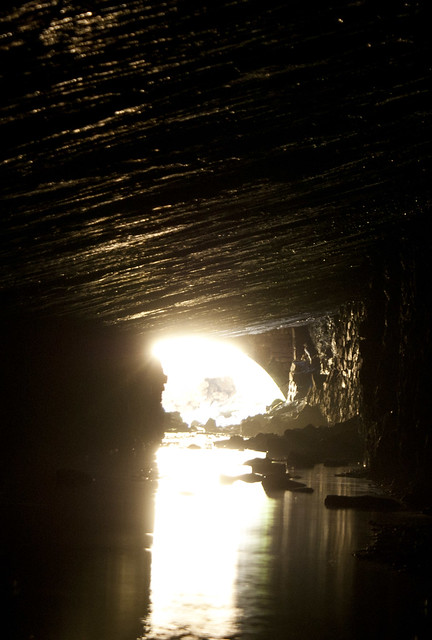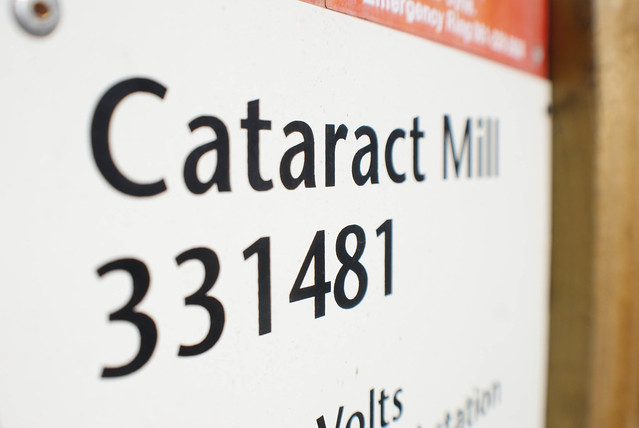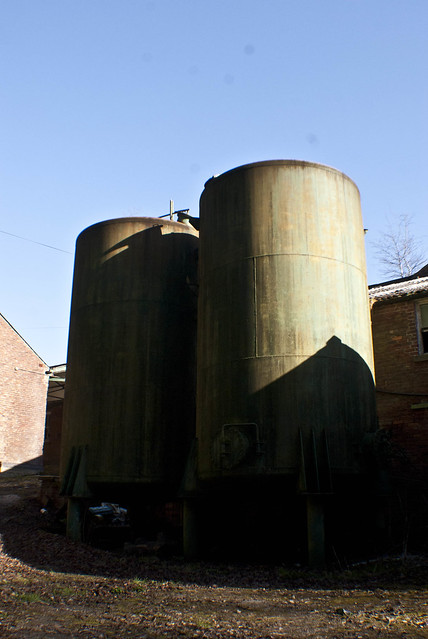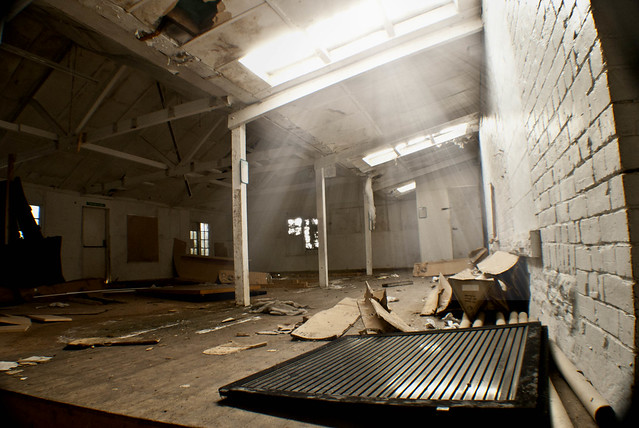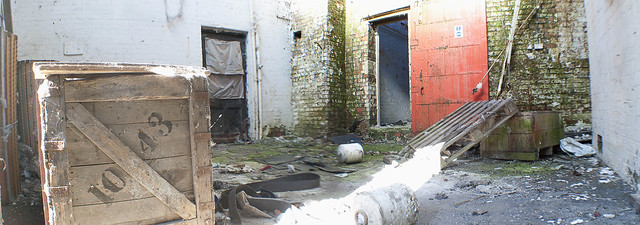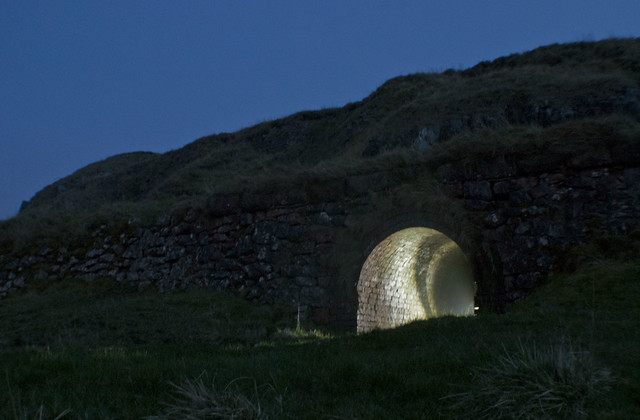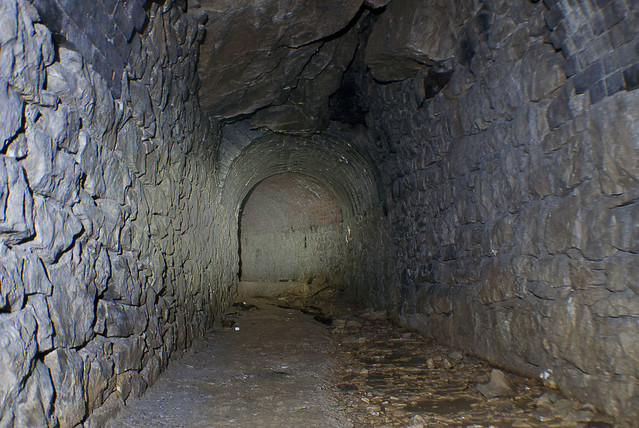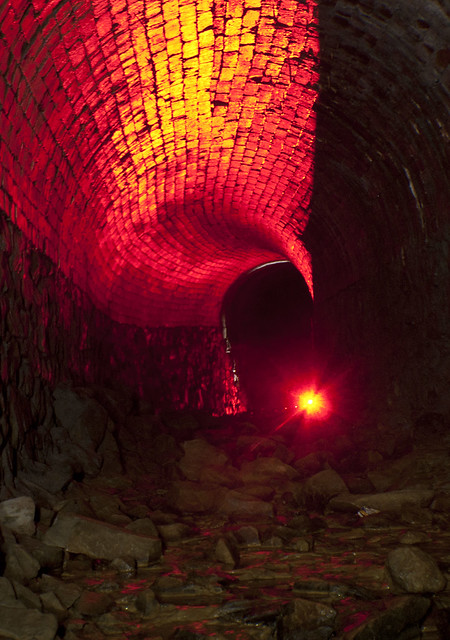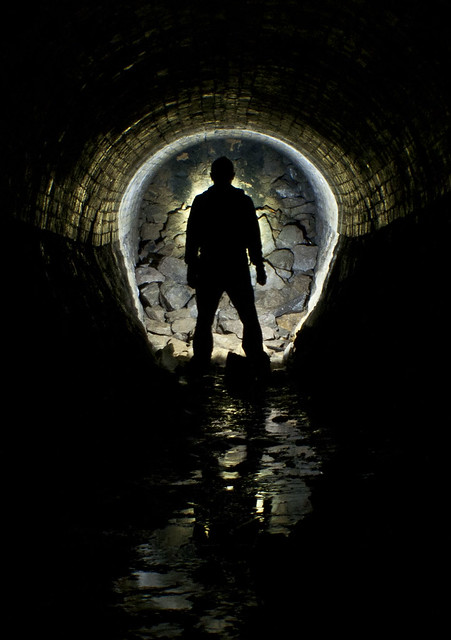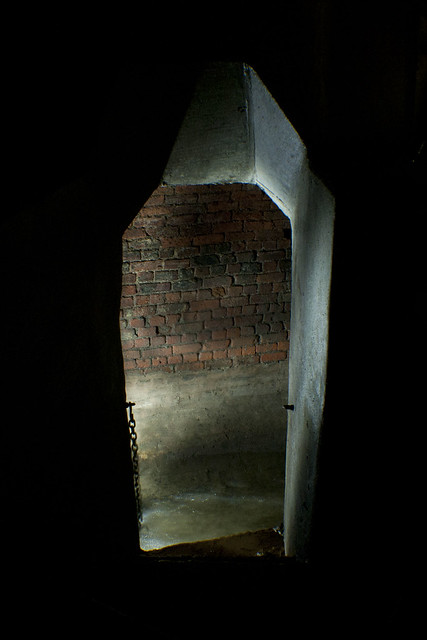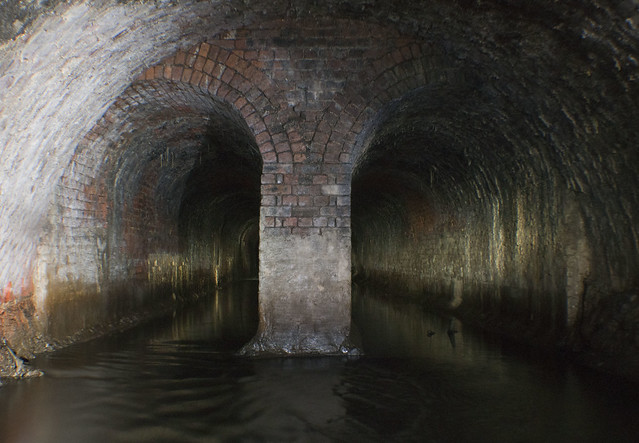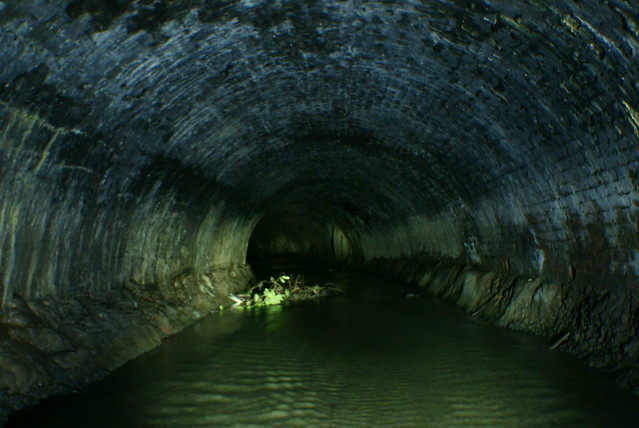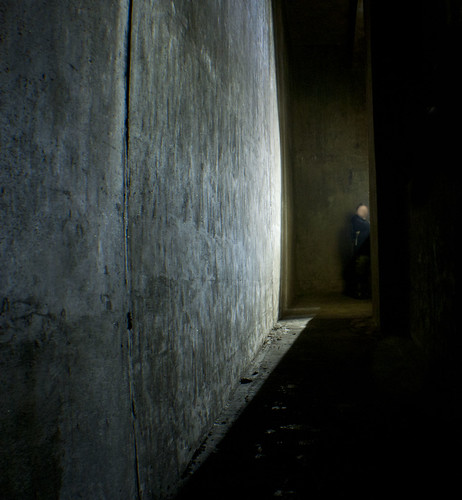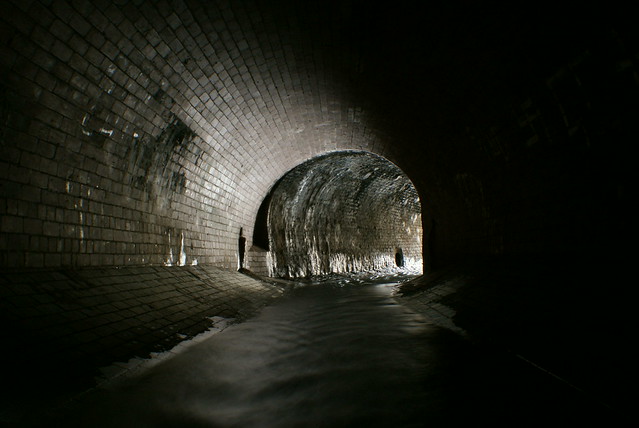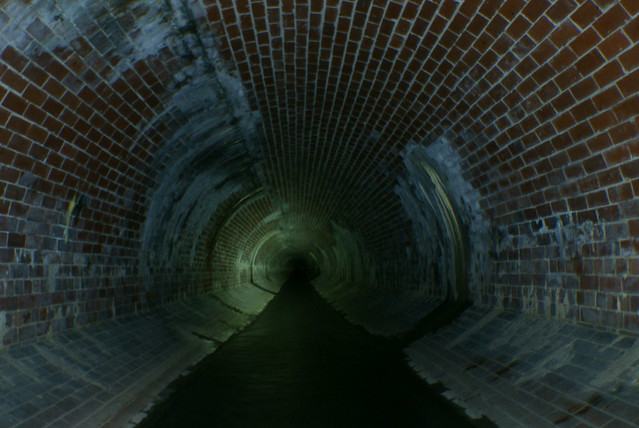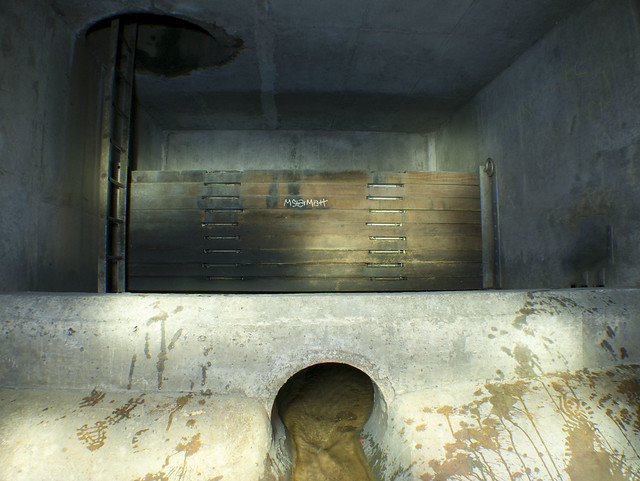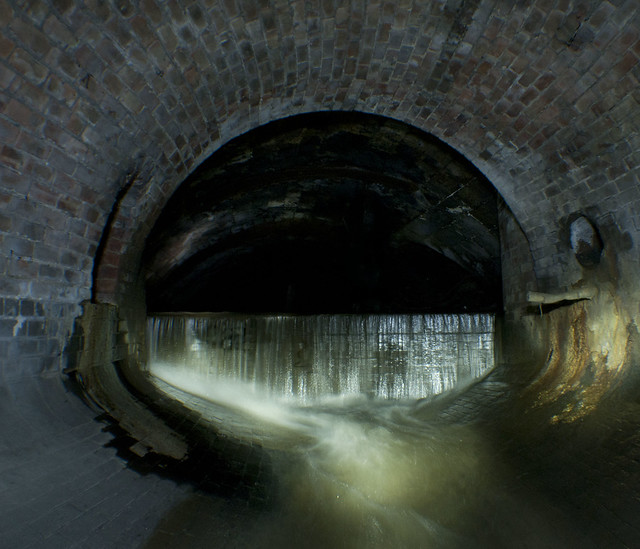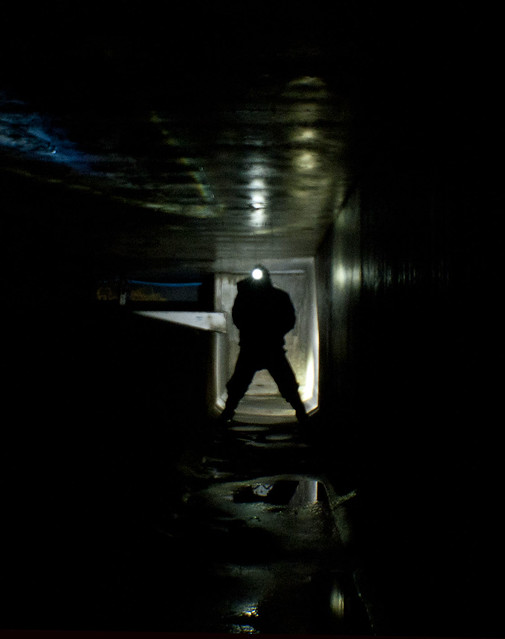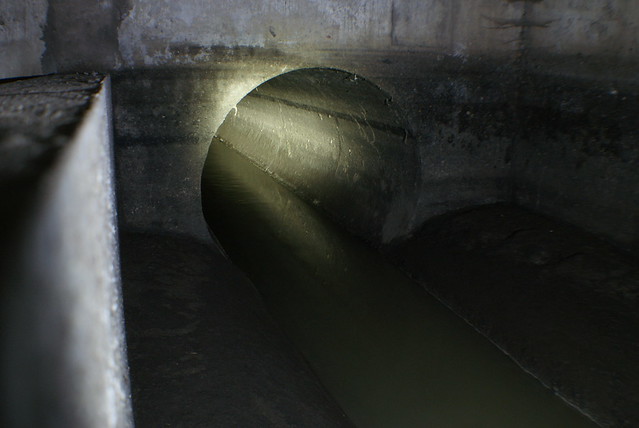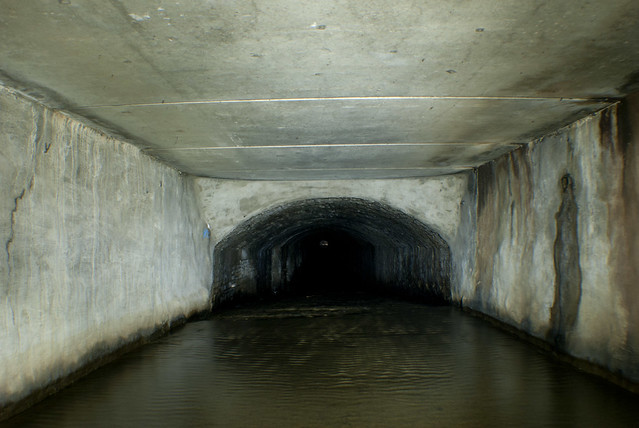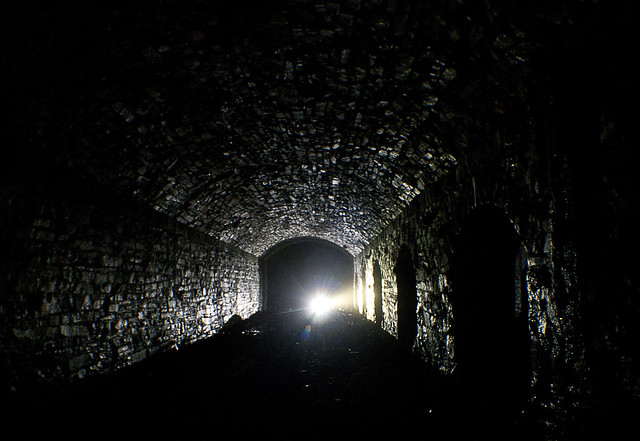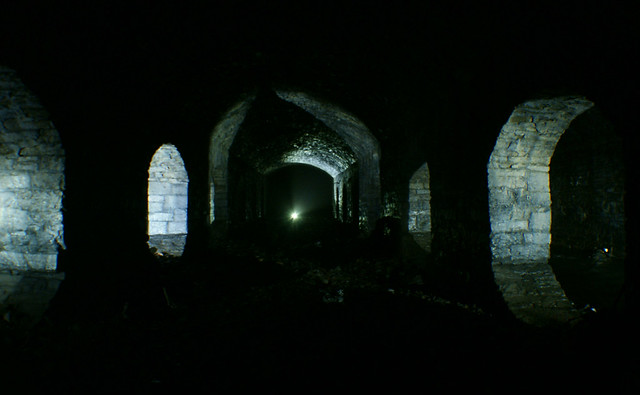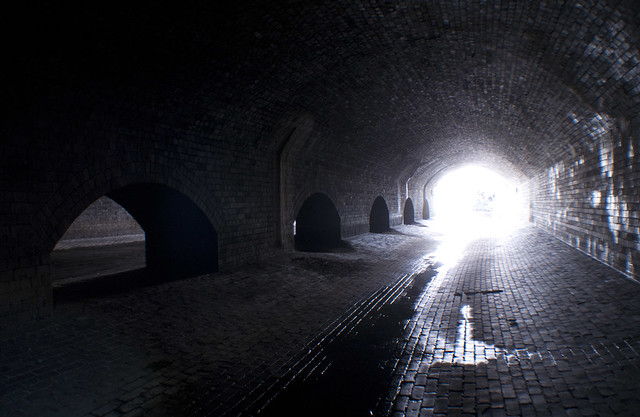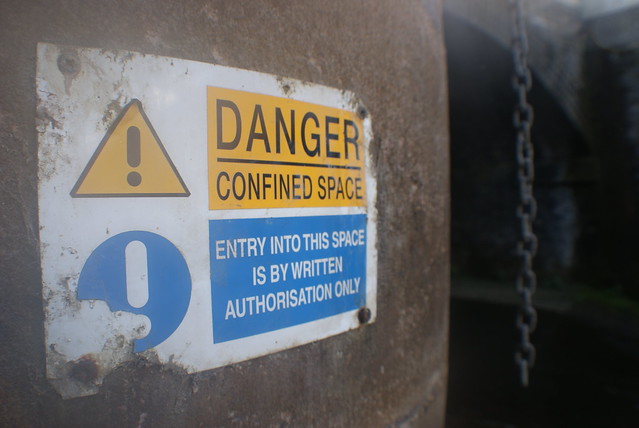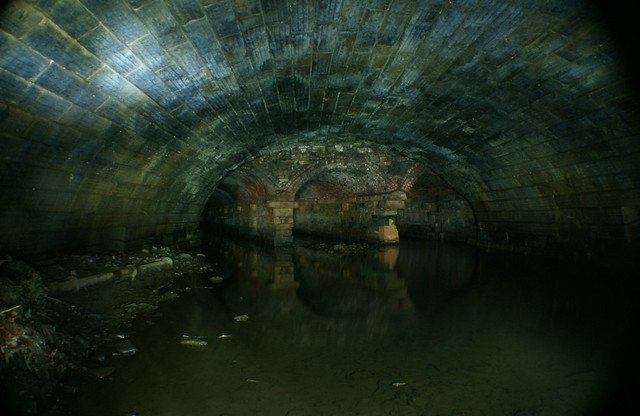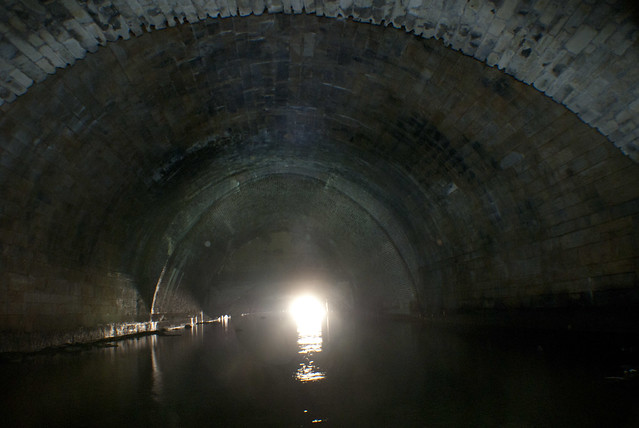In order to supply water to this wheel Oldknow literally reshaped the landscape and the Cheshire/Derbyshire county boundary formed by the River Goyt. The river was re-routed along a new cutting and a weir, sluice gate and leat were constructed to diverted water into a large millpond.
A separate corn mill was sited at the south end of the main mill, powered by its own wheel of unknown dimensions. It is not clear if this was constructed at the same time as the main building, or if it was a later addition. In 1815 a third wheel was added in a separate new building between the main mill and the river. Named the "Waterloo Wheel", it measured 20 feet in diameter and 18.5 feet wide. This wheel was powered by the exit water from the other two wheels via a system of underground tunnels. When not in use the water could be returned directly to the Goyt through a separate tunnel. The "Waterloo Wheel" supplied additional power to the main mill via an underground shaft, whilst a second shaft provided power to series of riverside workshops. The exit level from the bottom of this wheelpit was below that of the Goyt at its nearest point and in order to overcome that problem a significant feat of engineering was required. An exit tunnel was driven under the bed of the river and then carried the water 600 yards downstream until the level had fallen sufficiently to allow it to be discharged.
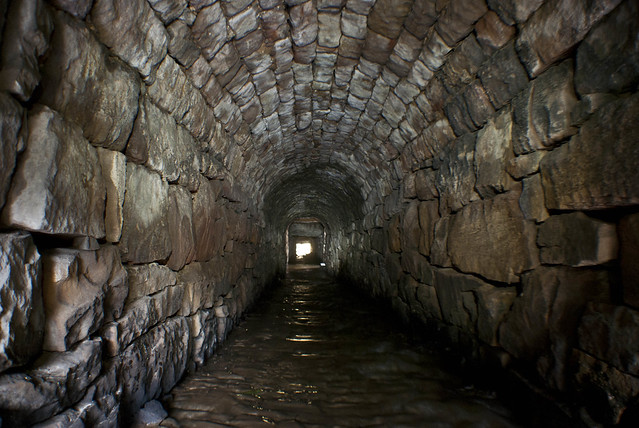
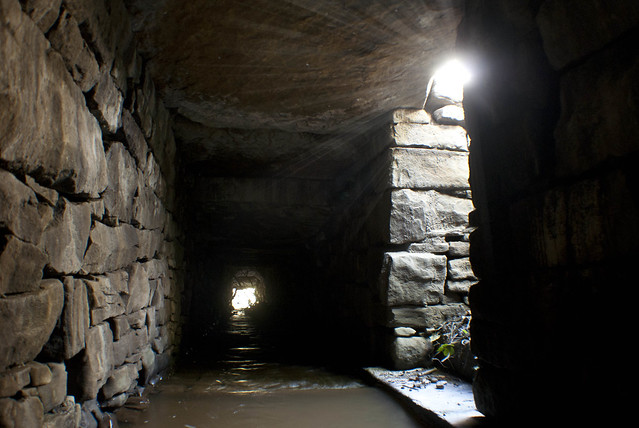

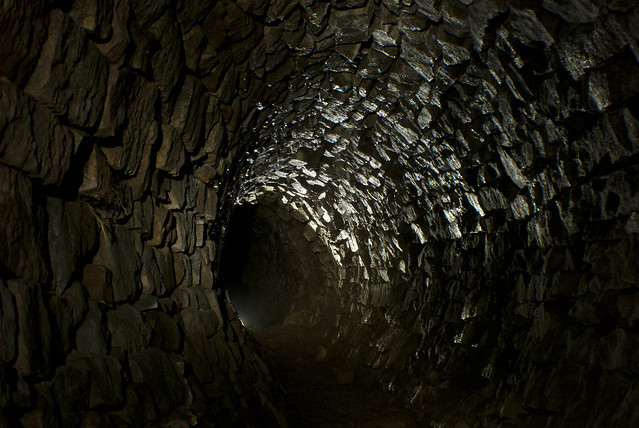

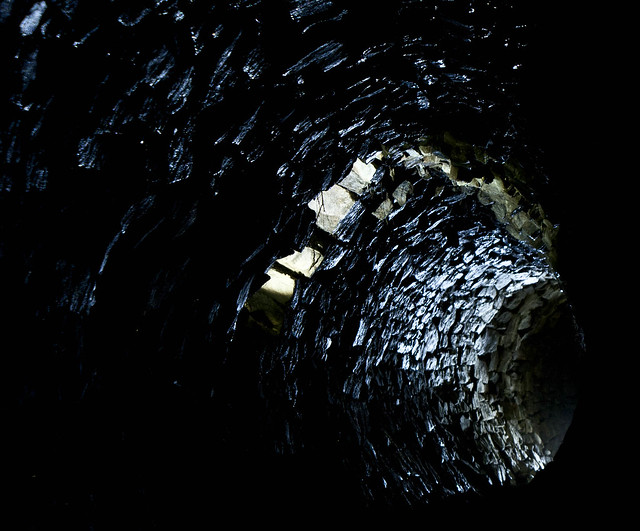
Which to choose

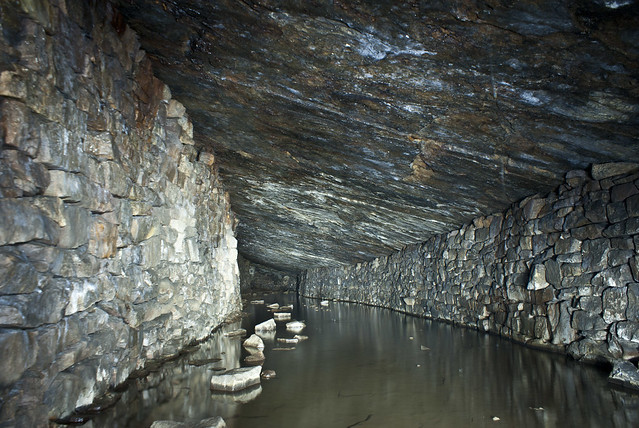
end of the line
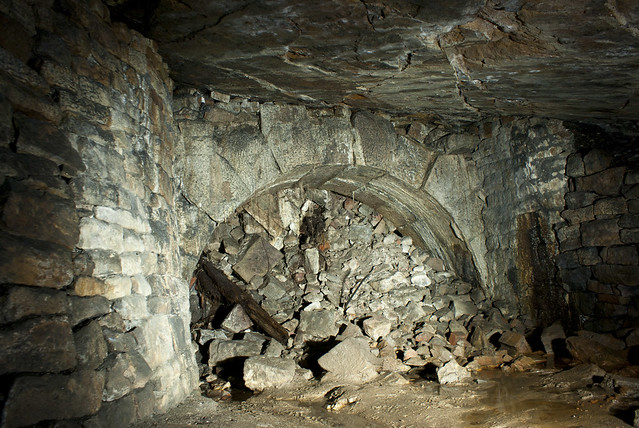
at the end is a nice little tunnel that takes you to the bottom of a well
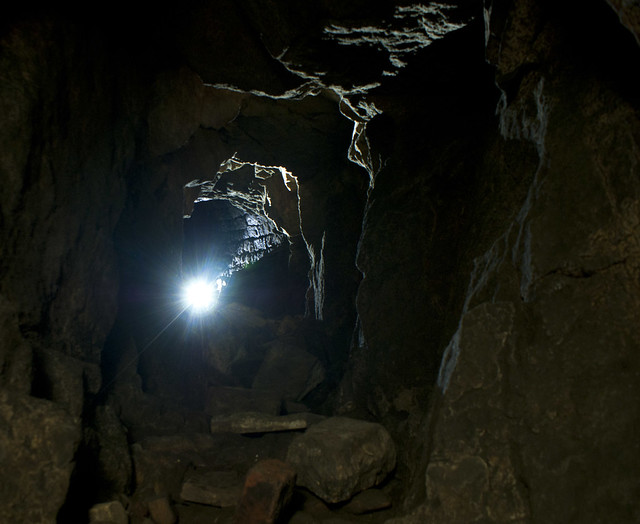
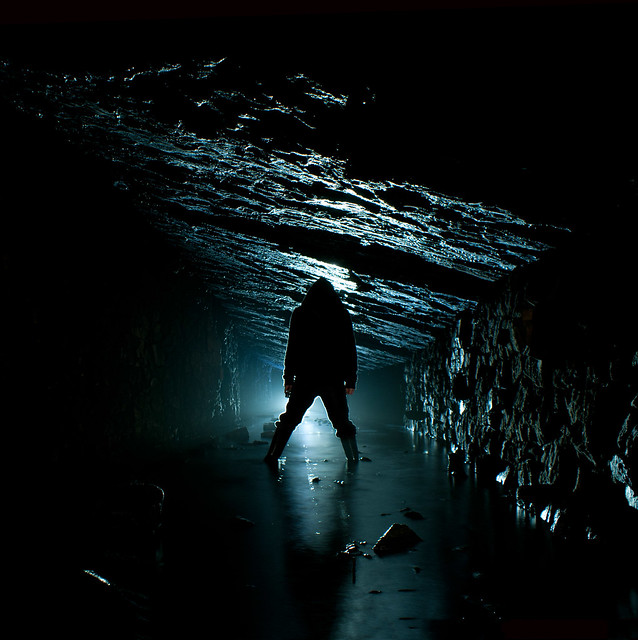
Time to head off
